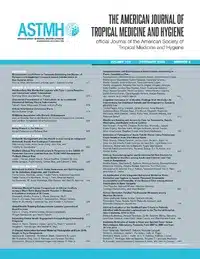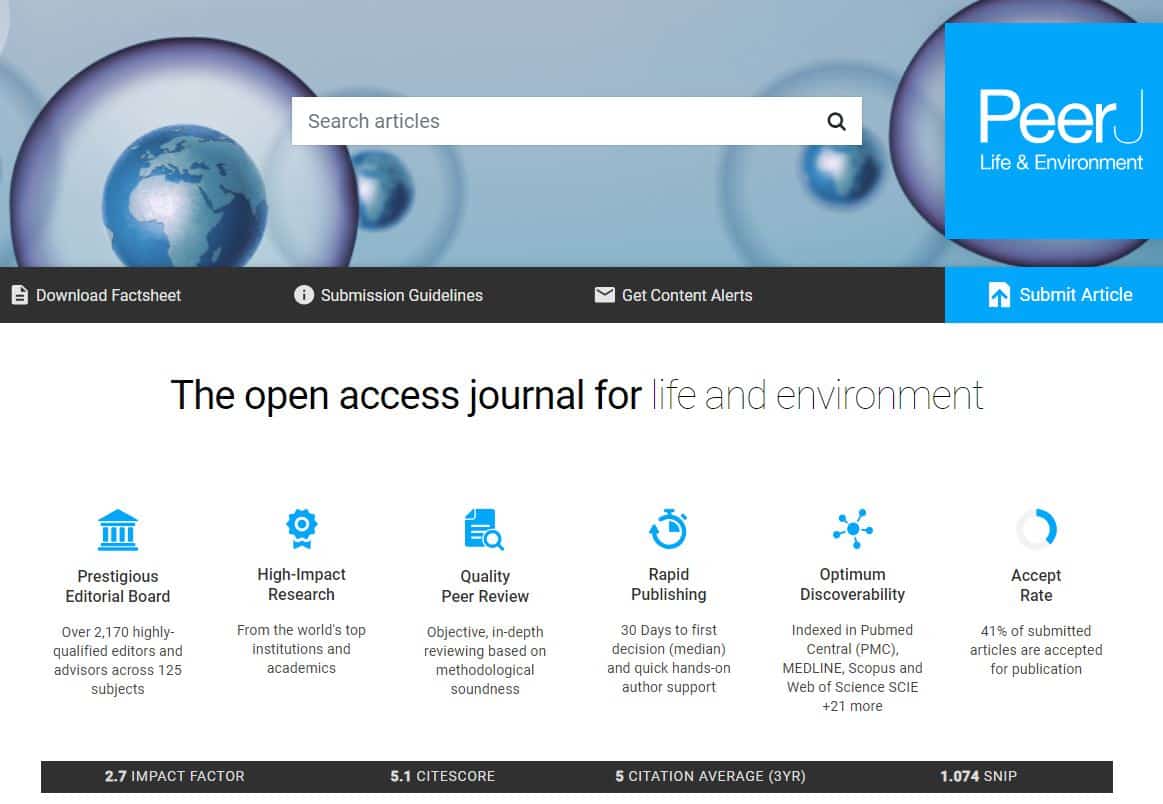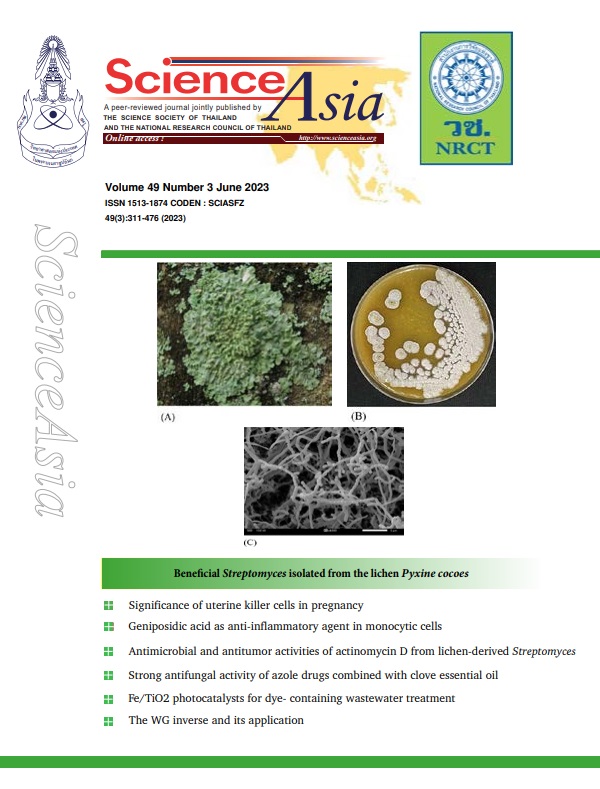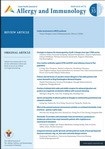
Seroprevalence of Chikungunya and Zika virus in nonhuman primates: A systematic review and meta-analysis (2022)
Title : Seroprevalence of Chikungunya and Zika virus in nonhuman primates: A systematic review and meta-analysis
Researcher : Mongkol, N., Wang, F.S., Suthisawat, S., …Charoen, P., Boonnak, K.
Abstract : Chikungunya virus (CHIKV) and Zika virus (ZIKV) are mosquito-borne viruses that have caused several outbreaks worldwide. Aedes mosquitoes transmit these viruses mainly through sylvatic and urban transmission cycles. In the sylvatic cycle, nonhuman primates (NHPs) can be infected with CHIKV and ZIKV and may play an essential role as reservoirs for virus transmission. To improve our knowledge on the role of NHPs in the sylvatic cycle, we performed a systematic review and meta-analysis study on the seroprevalence of CHIKV and ZIKV worldwide in NHPs. According to the PRISMA guidelines, 17 CHIKV and 16 ZIKV seroprevalence studies in NHPs from 3 online databases: PubMed, Embase, and Scopus were selected. Data were extracted, including location and study year, type of NHP, sample size, serological tests, and seropositivity. All included studies have high-quality scores, between 5 and 8, corresponding to the grading criteria. Seroprevalence estimation was pooled using the ‘meta’ package in the R statistical software. The estimated pooled seroprevalence of CHIKV and ZIKV in NHP was 17% (95%CI: 5–34, I2: 99%, p < 0.05) and 6% (95% CI: 2–12, I2: 92%, p < 0.05), respectively. Most of the NHPs tested were wild Old World monkeys. The subgroup was analyzed by continents; high seropositive CHIKV and ZIKV were found in African NHPs at 35% (95% CI 9–66.0, I2 = 100) and 16% (95% CI 1–44, I2 = 97), respectively. While NHPs in America have 7% (95% CI 0-28, I2 = 99) and 2% (95% CI 1-3, I2 = 54) against CHIKV and ZIKV. In Asia, 6% (95% CI: 5–34, I2 = 96) CHIKV seroprevalence and 7% (95% CI 0–20, I2 = 98) ZIKV seroprevalence were found in NHP. This study provides a comprehensive overview of the seroprevalence of CHIKV and ZIKV among NHPs in various regions.
Keywords: Chikungunya virus, Zika virus, Seroprevalence, Nonhuman primates, Systematic review, Meta-analysis
Link to Academic article: https://doi.org/10.1016/j.onehlt.2022.100455
Journal : One Health, 2022, 15.
Bibliography : Mongkol, N., Wang, F.S., Suthisawat, S., Likhit, O., Charoen, P., Boonnak, K. (2022). Seroprevalence of Chikungunya and Zika virus in nonhuman primates: A systematic review and meta-analysis. One Health, 15, 100455. https://doi.org/10.1016/j.onehlt.2022.100455

Seroprevalence of Dengue, Zika, and Chikungunya Viruses in Wild Monkeys in Thailand (2020)
Title : Seroprevalence of Dengue, Zika, and Chikungunya Viruses in Wild Monkeys in Thailand
Researcher :Tongthainan, D., Mongkol, N., Jiamsomboon, K., …Tulayakul, P., Boonnak, K.
Abstract : Zoonotic pathogens such as arboviruses have comprised a significant proportion of emerging infectious diseases in humans. The role of wildlife species as reservoirs for arboviruses is poorly understood, especially in endemic areas such as Southeast Asia. This study aims to determine the exposure history of different macaque species from national parks in Thailand to mosquito-borne flaviviruses and alphavirus by testing the serum samples collected from 25
northern pigtailed macaques, 33 stump-tailed macaques, and 4 long-tailed macaques for the presence of antibodies against dengue, Zika, and chikungunya viruses by plaque reduction neutralization assay. Specific neutralizing antibodies against Dengue virus (DENV1-4) and Zika virus (ZIKV) were mainly found in stump-tailed macaques, whereas neutralizing antibody titers were not detected in long-tailed macaques and pigtailed macaques as determined by 90% plaque
reduction neutralization assay (PRNT90). One long-tailed macaque captured from the south of Thailand exhibited antibody titers against chikungunya virus (CHIKV), suggesting enzootic of this virus to nonhuman primates (NHPs) in Thailand. Encroachment of human settlements into the forest has increased the interface that exposes humans to zoonotic pathogens such as arboviruses found in monkeys. Nonhuman primates living in different regions of Thailand showed different patterns of arboviral infections. The presence of neutralizing antibodies among wild monkeys in Thailand strongly suggests the existence of sylvatic cycles for DENV, ZIKV, and CHIKV in Thailand. The transmission of dengue, Zika, and chikungunya viruses among wild macaques may have important public health implications.
Link to Academic article: DOI: https://doi.org/10.4269/ajtmh.20-0057
Journal : American Journal of Tropical Medicine and Hygiene, 2020, 103(3).
Bibliography : Tongthainan, D., Mongkol, N., Jiamsomboon, K., Suthisawat, S., Sanyathitiseree, P., Sukmak, M.,… Boonnak, K. (2020). Seroprevalence of Dengue, Zika, and Chikungunya Viruses in Wild Monkeys in Thailand. American Journal of Tropical Medicine and Hygiene, 103(3), 1228–1233.

Skin Prick Test Versus Phadiatop as a Tool for Diagnosis of Allergic Rhinitis in Children (2021)
Title : Skin Prick Test Versus Phadiatop as a Tool for Diagnosis of Allergic Rhinitis in Children
Researcher : Clin.Prof.Suwat Benjaponpitak
Department : Faculty of Medicine, Siam University, Bangkok, Thailand
E-mail : med@siam.edu
Abstract : Background: Skin prick test (SPT) or Phadiatop, a multi-allergen IgE screening test, was used as a tool for detecting aeroallergen sensitization.
Objective: To compare SPT and Phadiatop as a tool for diagnosis allergic rhinitis (AR) using the nasal provocation test (NPT) as a comparative standard.
Methods: Children aged 5-18 years with rhinitis symptoms more than 6 times in the past year were enrolled. SPT to 13 common aeroallergens, serum for Phadiatop, and NPT to Dermatophagoides pteronyssinus (Der p) were performed. NPT to mixed cockroach (CR) were performed in children who had CR sensitization and negative NPT to Der p. Children who had a disagreement between the result of SPT and Phadiatop or having negative results were evaluated for specific IgE (sIgE) to common aeroallergens.
Results: One hundred-forty children were enrolled with the mean age of 9.8 ± 3 years, 56% were male. Of 92 children (65.7%) with positive SPT to any aeroallergens, 88 children (95.6%) were sensitized to house dust mite (HDM). NPT showed positive results in 97 children (69.3%). Of 48 children who showed negative SPT, 4 children (8.3%) had sIgE to aeroallergens but NPT was positive in 1 child. Eighty-eight children (62.9%) had positive tests for Phadiatop and 4 (4.5%) of them had negative results for NPT to Der p. Among 52 children who had negative results for Phadiatop, 4 children (7.6%) had sIgE to aeroallergens but NPT was positive in 2 children (3.8%). SPT and Phadiatop showed 94.2% agreement: with Kappa 0.876, p < 0.001. Using NPT as a comparative standard for diagnosis for AR, SPT showed a sensitivity of 89.6% and specificity of 88.3% and Phadiatop provided the sensitivity of 88.6% and specificity of 95.3%.
Conclusions: SPT to aeroallergen and Phadiatop have good and comparable sensitivity and specificity for the diagnosis of AR in children.
Keywords: IgE; Phadiatop; aeroallergen; children; cockroach allergic; dust mite; nasal provocation test; rhinitis; skin prick test.
Link to Academic article: DOI: 10.1177/1945892420938300
Journal : American Journal of Rhinology & Allergy Volume 35 Issue 1, January 2021
Bibliography : Traiyan, S., Manuyakorn, W., Kanchongkittiphon, W., Sasisakulporn, C., Jotikasthira, W., Kiewngam, P., Kamchaisatian, W., & Benjaponpitak, S. (2021, January). Skin Prick Test Versus Phadiatop as a Tool for Diagnosis of Allergic Rhinitis in Children. Am J Rhinol Allergy, 35(1), 98-106. doi: 10.1177/1945892420938300. Epub 2020 Jun 27. PMID: 32597210.

Special Interest Tourism
Title : Special Interest Tourism
Authors : Bongkosh N. Rittichainuwat
Department : Service Industry Management, Siam University, Bangkok, Thailand
E-mail : Bongkosh N. Rittichainuwat ngamson@gmail.com
Description : This research-based textbook covers 15 chapters on food, film, shopping, medical, ghost, and suicide tourism, based on research conducted over 15 years on tourists from East Asia and Southeast Asia, the UK, the USA, Australia, Germany, and New Zealand. It introduces students, researchers, educators, tourist bureaus, and tour operators to the demands of affluent tourists from the newly industrialized countries of East Asia and Southeast Asia.
Link to E-book: Special Interest Tourism
Bibliography : Rittichainuwat, B. N. (2018). Special Interest Tourism (3rd ed.). Newcastle upon Tyne, UK: Cambridge Scholars Publishing.
Author details in Scopus: Rittichainuwat, Bongkosh Ngamsom
Google Scholar Citations: https://scholar.google.com/citations?user=ifUlKJoAAAAJ&hl=en

Streptococcus pneumoniae Causing Invasive Diseases in Children and Adults in Central Thailand, 2012–2016 (2022)
Title : Streptococcus pneumoniae Causing Invasive Diseases in Children and Adults in Central Thailand, 2012–2016
Researcher : Wanatpreeya Phongsamart, Somporn Srifeungfung, Tanittha Chatsuwan, Pimpha Rungnobhakhun, Alan Maleesatharn and Kulkanya Chokephaibulkit
Link to article: Vaccines, Volume 10, Issue 8, 21 August 2022, Pages 1-12. https://doi.org/10.3390/vaccines10081368
Journal : Vaccines / in Scopus
Citation : Phongsamart W., Srifeungfung S., Chatsuwan T., Rungnobhakhun P., Maleesatharn A. and Chokephaibulkit K. (2022). Streptococcus pneumoniae Causing Invasive Diseases in Children and Adults in Central Thailand, 2012–2016. Vaccines, 10(8), 1-12. https://doi.org/10.3390/vaccines10081368
ฐานข้อมูลงานวิจัย มหาวิทยาลัยสยาม : https://e-research.siam.edu/kb/streptococcus-pneumoniae-causing/

Stress-induced changes in cognitive function and intestinal barrier integrity can be ameliorated by venlafaxine and synbiotic supplementations (2024)
Title : Stress-induced changes in cognitive function and intestinal barrier integrity can be ameliorated by venlafaxine and synbiotic supplementations
Researcher : Sarawut Lapmanee, Nattapon Supkamonseni, Sakkarin Bhubhanil, Nattakan Treesaksrisakul, Chaiyos Sirithanakorn, Mattaka Khongkow, Katawut Namdee, Piyaporn Surinlert, Chittipong Tipbunjong and Prapimpun Wongchitrat
Department : Faculty of Medicine, Siam University, Bangkok, Thailand
E-mail : sarawut.lap@siam.ed
Link to article : PeerJ, 2024, 12, e17033. https://doi.org/10.7717/peerj.17033
Citation : Lapmanee, S., Supkamonseni, N., Bhubhanil, S., Treesaksrisakul, N., Sirithanakorn, C., Khongkow, M., Namdee, K., Surinlert, P., Tipbunjong, C., Wongchitrat, P. (2024). Stress-induced changes in cognitive function and intestinal barrier integrity can be ameliorated by venlafaxine and synbiotic supplementations. PeerJ, 12, e17033. https://doi.org/10.7717/peerj.17033
Journal : PeerJ / in Scopus
ฐานข้อมูลงานวิจัย มหาวิทยาลัยสยาม : https://e-research.siam.edu/kb/stress-induced-change/

Study of Streptococcus pneumoniae serotype 19A blood isolates from Thailand by enterobacterial repetitive intergenic consensus (ERIC)-PCR typing (2023)
Title : Study of Streptococcus pneumoniae serotype 19A blood isolates from Thailand by enterobacterial repetitive intergenic consensus (ERIC)-PCR typing (SCOPUS)
Researcher : Thitiya Yungyuena, Piriyaporn Chongtrakoola, Wanatpreeya Phongsamartb, Unchalee Puangprasarta, Chalermsri Pummangurac, Dararat Samretwitc, Somporn Srifuengfung
Link to article: ScienceAsia , Volume 49, Issue 3, pages 485-490. https://doi.org/10.2306/scienceasia1513-1874.2023.038
Journal : ScienceAsia / in Scopus
Citation : Yungyuena T., Chongtrakoola P., Phongsamartb W., Puangprasarta U., Pummangurac C., Samretwit D., & Srifuengfung S.. (2023). Study of streptococcus pneumoniae serotype 19A blood isolates from Thailand by enterobacterial repetitive intergenic consensus (ERIC)-PCR typing. ScienceAsia, 49(3), 485-900. https://doi.org/10.2306/scienceasia1513-1874.2023.038
ฐานข้อมูลงานวิจัย มหาวิทยาลัยสยาม : https://e-research.siam.edu/kb/study-of-streptococcus-pneumoniae/

Successful haploidentical hematopoietic stem cell transplantation with post-transplant cyclophosphamide in a child with X-linked chronic granulomatous disease: A first report in Asia (2019)
Title : Successful haploidentical hematopoietic stem cell transplantation with post-transplant cyclophosphamide in a child with X-linked chronic granulomatous disease: A first report in Asia
Researcher : Clin.Prof.Suwat Benjaponpitak
Department : Faculty of Medicine, Siam University, Bangkok, Thailand
E-mail : med@siam.edu
Abstract : Backgound: HLA-matched hematopoietic stem cell transplantation (HSCT) is the curative treatment for chronic granulomatous disease (CGD).
Objective: To report a case of X-linked CGD with active infection successfully treated by haploidentical HSCT with post-transplant high dose cyclophosphamide (PTCY).
Methods: A 5-year-old Thai boy with CGD was undergone for haploidentical HSCT using PTCY with correction of the phagocytic function. He presented with Chromobacterium violaceum liver abscess at the age of 9 months and experienced recurrent perianal abscess and invasive pulmonary aspergillosis even receiving antimicrobial prophylaxis. PTCY was given on day 3 and 4, after CD34+ cells infusion.
Results: The peripheral blood-nucleated cell chimerism showed 100% on day 16 and remained 100%. Dihydrorhodamine (DHR) assay on day 108 and day 214 showed normal results. Currently at 22 months post HSCT, he does not receive antibiotic and anti-fungal prophylaxis.
Conclusions: Haploidentical HSCT with PTCY could be an effective treatment option for children with CGD.
Key words: Haploidentical transplantation, Hematopoietic stem cell transplantation. Chronic granulomatous disease, Cyclophosphamide, Graft-Versus-Host Disease
Link to Academic article: DOI: 10.12932/AP-290419-0551
Journal : Asian Pacific journal of allergy and immunology
Bibliography : Janjindamai, C., Manuyakorn, W., Anurathapan, U., Pakakasama, S., Wattanasirichaigoon, D., Kamchaisatian, W., Benjaponpitak, S., & Hongeng, S. (2019, November 3). Successful haploidentical hematopoietic stem cell transplantation with post-transplant cyclophosphamide in a child with X-linked chronic granulomatous disease: A first report in Asia. Asian Pac J Allergy Immunol, doi: 10.12932/AP-290419-0551. Epub ahead of print. PMID: 31677618.

Successful haploidentical hematopoietic stem cell transplantation with post-transplant cyclophosphamide in a child with X-linked chronic granulomatous disease: A first report in Asia (2022)
Title : Successful haploidentical hematopoietic stem cell transplantation with post-transplant cyclophosphamide in a child with X-linked chronic granulomatous disease: A first report in Asia
Researcher : Chawisa Janjindamai , Wiparat Manuyakorn, Usanarat Anurathapan, Samart Pakakasama, Duangrurdee Wattanasirichaigoon, Wasu Kamchaisatian, Suwat Benjaponpitak, Suradej Hongeng
Department : Faculty of Medicine, Siam University, Bangkok, Thailand
E-mail : med@siam.edu
Abstract : Background: HLA-matched hematopoietic stem cell transplantation (HSCT) is the curative treatment for chronic granulomatous disease (CGD).
Objective: To report a case of X-linked CGD with active infection successfully treated by haploidentical HSCT with post-transplant high dose cyclophosphamide (PTCY).
Methods: A 5-year-old Thai boy with CGD was undergone for haploidentical HSCT using PTCY with correction of the phagocytic function. He presented with Chromobacterium violaceum liver abscess at the age of 9 months and experienced recurrent perianal abscess and invasive pulmonary aspergillosis even receiving antimicrobial prophylaxis. PTCY was given on day 3 and 4, after CD34+ cells infusion.
Results: The peripheral blood-nucleated cell chimerism showed 100% on day 16 and remained 100%. Dihydrorhodamine (DHR) assay on day 108 and day 214 showed normal results. Currently at 22 months post HSCT, he does not receive antibiotic and anti-fungal prophylaxis.
Conclusions: Haploidentical HSCT with PTCY could be an effective treatment option for children with CGD.
Link to article: Asian Pacific Journal of Allergy and Immunology, 2022, 40(3), pp. 278–282. https://doi.org/10.12932/ap-290419-0551
Journal : Asian Pacific journal of allergy and immunology / in Scopus
Citation : Janjindamai, C., Manuyakorn, W., Anurathapan, U., Pakakasama, S.,Wattanasirichaigoon, D., Kamchaisatian, W., Benjaponpitak, S. & Hongeng, S. (2022). Successful haploidentical hematopoietic stem cell transplantation with post-transplant cyclophosphamide in a child with X-linked chronic granulomatous disease: A first report in Asia. Asian Pac J Allergy Immunol, 40(3), 278–282. https://doi.org/10.12932/ap-290419-0551
ฐานข้อมูลงานวิจัย มหาวิทยาลัยสยาม : –

Sustainable Development Goals 2018-2020 Report
Title : Sustainable Development Goals 2018-2020 Report
Department : Siam University, 38 Petchkasem Rd., Bang Wa, Phasi Charoen, Bangkok 10160, Thailand
[dflip id="7883"][/dflip]
Bibliography : Siam University. (2020). Sustainable Development Goals 2018-2020 Report. Bangkok, Thailand: Author.